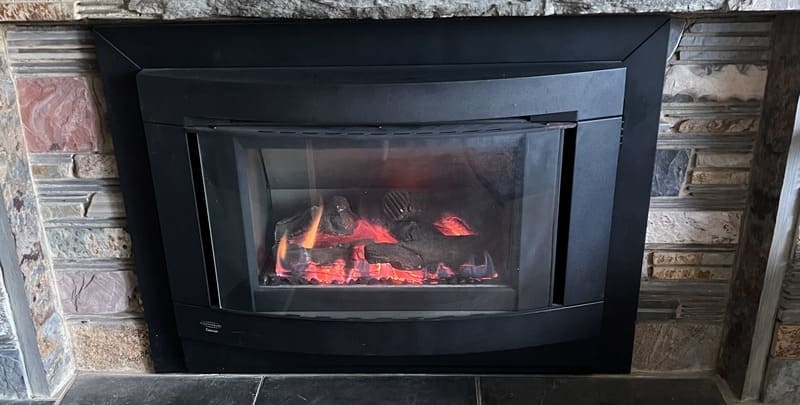
All You Need to Know about Carbon Monoxide
Often dubbed the ‘silent killer’, carbon monoxide (CO) is an odourless gas that can lead to serious health problems, including life-threatening medical conditions. This invisible threat is produced by common household items, from gas cooktops to fuel-burning space heaters.
Through this blog, we aim to shed light on the dangers of carbon monoxide poisoning, its sources, and the crucial steps to prevent it. Our focus is to arm you with knowledge and practical tips to safeguard your home against this toxic and potentially lethal substance.
So, let’s dive in and learn all about carbon monoxide, ensuring your home is a safe haven for you and your loved ones.
How Is Carbon Monoxide Produced?
So, what exactly is carbon monoxide?
Picture this: an invisible, odourless gas; sneaky and potentially deadly. It’s a by-product of burning fuels like gas, oil, wood, or coal. Now, here’s where it gets interesting – carbon monoxide is a bit of a scientific wonder. It’s made up of one carbon atom and one oxygen atom, and it forms when there isn’t enough oxygen to produce carbon dioxide. Pretty common in everyday life, right? But, its chemical properties make it a silent hazard in our homes.
When inhaled, CO can be extremely harmful, even at low concentrations. That’s why understanding and detecting this stealthy gas is crucial for our health and safety. Let’s keep our wits about us and learn how to outsmart this odourless intruder!
Sources of Carbon Monoxide in the Home
Ever wondered where this sneaky carbon monoxide comes from in your home? It’s like an uninvited guest, produced by things we use daily. The usual suspects that produce carbon monoxide? They include:
- gas stoves
- space heaters
- gas hot water systems
- internal combustion engines (including chainsaws, lawnmowers, leaf blowers)
Basically, any fuel-burning appliances running on natural gas, oil, or coal are common sources of carbon monoxide.
But It’s Not Just The Water Heater Or The Stove!
Here’s a fact that might surprise you: even your car, idling in the garage, can be a source of CO. And let’s not forget those cosy winter nights by the fireplace – yes, wood burning can release carbon monoxide too. The kicker is that these sources are perfectly safe when used correctly and maintained well. But, if they’re not, they can turn into real dangers, releasing potentially large quantities of carbon monoxide into your home. Knowledge is power, and knowing where CO can come from is the first step in keeping your home safe.
Symptoms Of Carbon Monoxide Poisoning
Let’s chat about the silent threat in our homes – carbon monoxide poisoning. It’s sneaky because CO is a gas with toxic fumes you can’t see, smell, or taste. When you breathe it in, carbon monoxide affects your body and blood’s ability to carry oxygen, leading to all sorts of health issues throughout your body.
The most common symptoms of carbon monoxide poisoning? They’re often tricky, with many people mistaking them for the flu or food poisoning. But they can include:
- chest pain
- breathing problems
- headaches
- dizziness
- nausea
For pregnant women, older adults, those with heart and lung disease, and even those who live at high altitudes, the risk of CO poisoning is even higher. The scariest part? High levels of carbon monoxide can be life-threatening, affecting the nervous system and causing serious heart or brain damage. So, it’s crucial to be aware of CO poisoning’s potential dangers in our homes – knowledge that could save lives. Stay alert and stay safe, folks!
Detecting the Odourless Gas: CO Detectors and Their Importance
Now, let’s talk about our best defence against carbon monoxide – CO detectors. These little gadgets can literally be lifesavers.
Since CO is odourless and invisible, we can’t rely on our senses to spot it. That’s where the carbon monoxide detector comes in, detecting the levels of carbon monoxide and alerting us to its presence before it becomes dangerous.
Regular Maintenance Is Important
Installing these detectors in key areas of your home is a no-brainer. Think of them as a bodyguard of sorts, keeping watch for any signs of CO, especially near bedrooms to alert you while you sleep. And just like any good guard, they need regular check-ups – testing and replacing batteries is a small task for such a big peace of mind. So, don’t underestimate the power of a CO detector. It’s a simple step, but it could be the one that keeps you and your family safe.

Ventilation: The Role of Fresh Air in CO Safety
Alright, let’s breathe some fresh air into our discussion – quite literally!
Ventilation is a game-changer in the fight against carbon monoxide in your home, particularly in an enclosed space. It’s all about keeping that good air flowing to prevent CO from building up. Whether you’re using a gas stove, space heaters, or even when parking cars in the garage, cracking a window open can make a huge difference. And in those cosy, but often stuffy, enclosed spaces? Proper ventilation is key. It’s like giving your house and home a breath of fresh air, diluting any CO that might be lurking around.
Remember, even the smallest step towards better ventilation can be a giant leap for your home’s CO safety. So, keep it airy and keep it safe – your health will thank you for it!
Responding to Carbon Monoxide Exposure
Alright, let’s talk about what to do if you suspect carbon monoxide exposure.
First off, stay calm but act quickly. If you or anyone in your home shows symptoms like dizziness, headaches, or nausea, it’s time to consider possible CO monoxide poisoning. First step? Get everyone, including pets, out into the fresh air immediately. Then, dial emergency services or head to the nearest emergency room. It’s crucial, especially if symptoms are severe. Don’t just brush it off as a bad case of the flu or food poisoning.
Remember, that CO poisoning can be a silent and serious threat. And while waiting for help, open all doors and windows to air out your home. It’s all about quick action and fresh air – they can make a world of difference in responding to being exposed to carbon monoxide. Stay alert, stay safe!
Preventative Measures: Keeping Your Home CO-Safe
Let’s get proactive about keeping our homes safe from carbon monoxide! Prevention is key, and it starts with regular maintenance of any appliance that burns fuel – think gas stoves, water heaters, and space heaters. Annual check-ups by a licensed technician, whether it’s a plumber or gas fitter, are a must to ensure they’re running safely and efficiently.
Also, never underestimate the power of good ventilation; it’s essential, especially in enclosed areas and when using fuel-burning heating devices. Another tip? Be cautious with portable heaters and charcoal grills, especially in enclosed spaces. And of course, a CO detector is your best mate here – make sure it’s installed and functioning properly. A little vigilance goes a long way in preventing CO hazards. Keeping these simple steps in mind can make your home a safer place for you and your family. Stay sharp and stay safe!
Legal Considerations: Australian Standards for CO Safety
When it comes to CO safety, there’s not just personal responsibility, there’s the law too. Here in Australia, we’ve got standards and regulations to keep our homes CO-smart. If you’re a landlord or homeowner, you’ve got legal duties to make sure all your gas appliances are up to scratch, following Australian safety standards. It’s not just about ticking boxes; it’s about providing safe living spaces.
Let’s not forget, too, that hiring certified professionals like Metropolitan Plumbing can help you meet these legal standards. They’ll ensure all installations and maintenance are top-notch, and provide carbon monoxide testing. Keeping on top of these legalities not only keeps the regulators happy but more importantly, keeps everyone in the home safe from the risks of carbon monoxide. Stay legal, stay safe, and keep that peace of mind intact.
Here Ends The Carbon Monoxide Lesson
And there we have it – a detailed rundown on carbon monoxide and how to keep your home safe from the danger of this silent invader. We’ve covered everything from understanding what CO is to spotting the signs of poisoning, and the importance of detectors. Remember, prevention is your best defence.
Regular checks of your appliances, keeping up with ventilation, and having a trusty CO detector are simple steps that make a huge difference. By staying informed and vigilant, we can protect our homes and loved ones from the dangers of CO. Don’t forget to share this knowledge; it’s crucial for everyone’s safety. Stay safe, stay informed, and let’s keep our homes CO-smart! Cheers to a safer home environment for all Aussies!
Please note: This information is provided for advice purposes only. Regulations differ from state to state, so please consult your local authorities or an industry professional before proceeding with any work. See our Terms & Conditions here.
Published: 2020-02-20

















